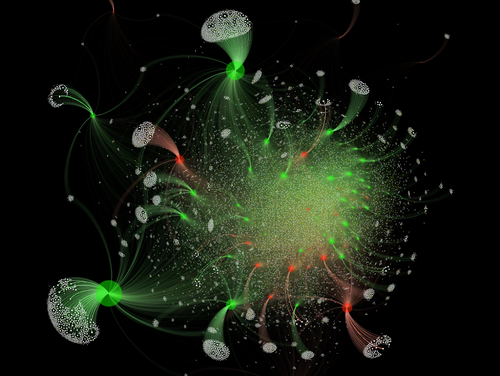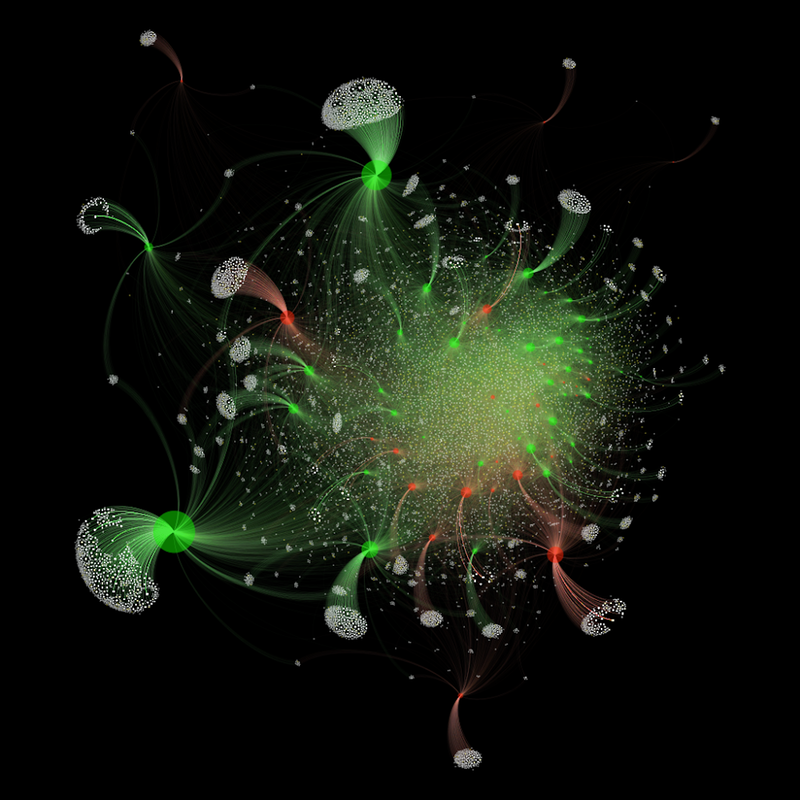Identifying Early Signs of Online Extremist Groups
In recent years, many terrorist attacks seem to have come out of the blue, making them inherently unpredictable. Efforts by intelligence agencies have mostly centered on trying to identify “lone wolves” before they act, but new research on the emergence of extremist groups online—using data on terrorist sympathizers—suggests that this strategy is misguided. The work likens the development of such groups to the formation of small clumps in a liquid that is close to turning into a gel and offers clues on how these groups might be detected early.
Theoretical models of gel formation, such as the coagulation of milk when it curdles, usually assume that the elements of the gel-forming medium are identical. But such uniformity is a highly inaccurate assumption when considering the phenomenon by which people with different nationalities and political beliefs form online groups, according to Neil Johnson of George Washington University in Washington, DC, and his colleagues. To describe the formation of such human networks in terms of gelation, the researchers required a model in which the elements can have quantifiably different characteristics.
The model they developed consists of a population whose elements, at the start of a clustering process, are each randomly assigned a “character” represented by a number between zero and one. At each timestep in the evolution of this population, randomly chosen pairs of elements interact and either permanently join or don’t join, depending on their characters. Two elements with exactly the same character always form a pair, and the probability of pairing decreases with increasing character difference. To determine whether two pairs or larger clusters join together, one element from each group is randomly selected to interact. If those two elements pair, then the clusters they belong to become a single, larger cluster.
Johnson and his colleagues showed that a mathematical formula predicts the distribution of clusters of given sizes as time progresses. They also performed computer simulations, which agreed with their analytical calculations.
As these model populations evolve, they transform from a collection of individuals to systems in which both the number and size of clumps increases. Sooner or later, gelation occurs—all of the clusters merge—but the timing of this event is hard to define precisely. In the case of milk curdling, Johnson says that, after a period of microscopic growth, small clots form, and even though they might not be obvious, the process of curdling could be imminent. Similarly, in the model, numerous clusters form before the majority of the population has condensed into clumps. The model suggests that a plot of the number of clusters vs cluster size gives critical information. When this relationship is a power law with a −5∕2 power, complete gelation of the system is coming very soon.
To test their model against real-world data, the researchers obtained information from the Russian-based VKontakte social network. Near the end of 2014, a number of pro-ISIS groups began to appear among the billions of VKontakte members. These groups grew in size and number over a period of several weeks until system administrators began to identify and shut down extremist connections. Just as in the simulations, the VKontakte group sizes showed a −5∕2 power-law distribution.
In addition, the researchers looked at the growth rates of individual groups and found good agreement with their predictions. In the model, groups whose members have a similar character tend to grow faster than those with a wider character variation. The VKontakte data had no variable corresponding to character, but the team found that the range of growth rates was close to the range in the analytical growth curves, when allowing for a variety of different mixes of character among group members.
The researchers say that the emergence of such groups is a manifestation of collective behavior, in which individuals with varying degrees of similarity coalesce as a result of more or less random encounters. The key to early detection is in finding the −5∕2 power-law growth of the overall number of groups, not in trying to identify their individual members.
Sanaz Zolghadriha, a social scientist at University College London, who works with the Grievance Project on radicalization, likes the study for its attempt to get away from the notion that “birds of a feather flock together.” She believes that understanding radicalization must take into account the differences among people who are drawn toward extremist groups—a factor that is central in the new model.
This research is published in Physical Review Letters.
–David Lindley
David Lindley is a freelance science writer, now retired. His most recent book is The Dream Universe: How Fundamental Physics Lost Its Way (Penguin Random House, 2020).





